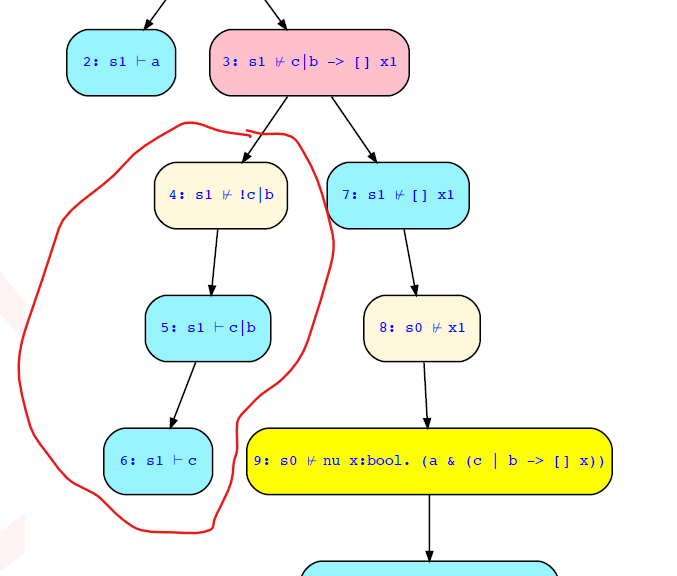2021.08 paper Problem 4.a
Here in Node #4,5 and 6, I did not understand how we arrived at this solution on left side of Node 3.
I think it is supposed to be like below, please correct me if I am wrong.
in Node 3, s1 |- (c|b)->[]x
Node 4: s1 |- !(c | b) (since !(c|b)-| []x causes a split in Node 3)
Node 5: s1 ⊬ !c & !b
Node 5 should cause a split because of AND operator? Node 6 will have s1 |-!c (Here s1 contains c so this will violate) and another Node will have s1 |-!b (Here s1 contains b so this will violate)? Although the final answer on satisfiability may be the same because of "OR" operator on Node 3, this will change however the solution on left side as compared to the solution shown in the answer sheet as Node 6 in answer sheet as s1 |- c.
